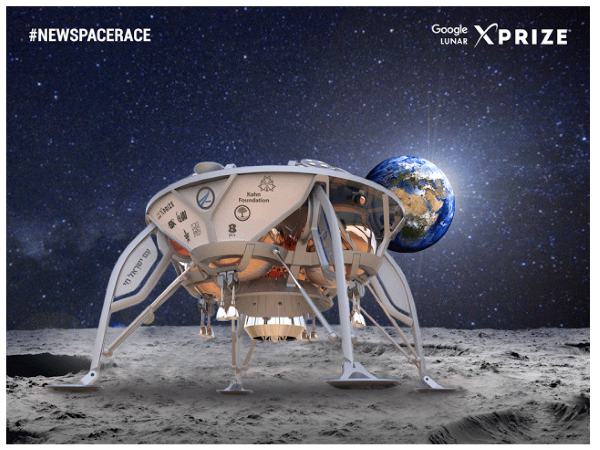For the last eight years, teams from around the world have been racing to win a global competition to land an unmanned spacecraft on the moon successfully. It’s called the Google Lunar XPRIZE, and it’s been going on in labs and universities from Brazil to Japan to Carnegie Mellon. With 16 remaining teams of scientists, explorers and adventurers hard at work designing and fundraising, the race is on to be the first privately-funded moon landing (and to take home a share of the $30 million prize purse that comes with it).
This week, they all got a little bit closer. Team SpaceIL, a team of engineers based in Israel, has just managed to secure a “ticket to the moon”—in the form of an official, verified launch contract—for its spacecraft on a SpaceX Falcon 9 rocket. The spacecraft will hitch a ride in a specially designed capsule on the Falcon 9; once separated from the launcher and released from the capsule, it will use navigation sensors to guide it to the lunar surface. Here’s a first look at the craft that will be heading to the moon in 2017:
An artist’s rendering of SpaceIL’s newly-designed spacecraft
And this is where the real fun begins. We kicked off this challenge in 2007 to foster innovation and entrepreneurship in space through low-cost, efficient access to the moon. But until now, all the tinkering has been on terra firma. SpaceIL’s securing of a verified launch contract by the December 2015 deadline keeps the competition open to all Google Lunar XPRIZE teams, who now have until the end of 2016 to secure their own launch contracts to head to the moon by the end of 2017.
The moon is not only our nearest neighbor in space, but also the gateway to the rest of the universe—providing exciting opportunities for discovery, and giving the rest of us a chance to engage more with science, technology and innovation. We hear a lot about “moonshots” these days, but this is the real thing.
So, congratulations to SpaceIL for getting to this phase, and to the other 15 teams: the new space race is on! Just like the astronauts, explorers and moonwalkers who came before you, you’re pushing the limits of what’s possible—let’s see who will make history.




















